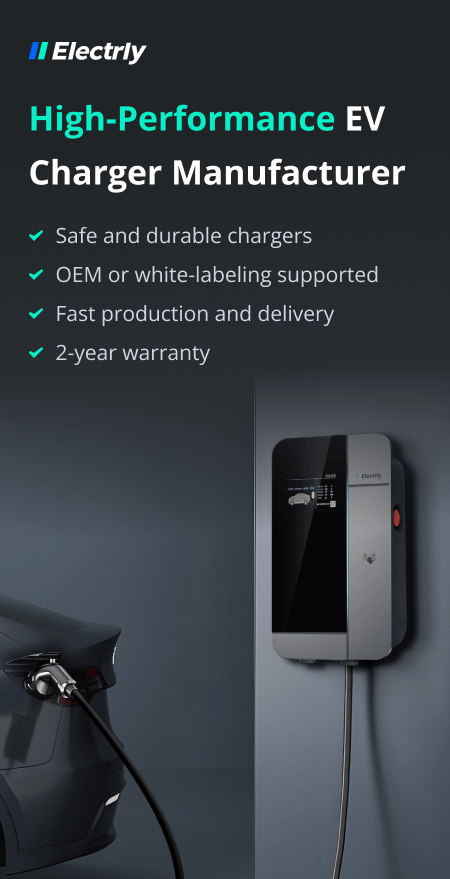Electric cars are very quickly becoming extremely popular, which is causing a surge in demand for charging stations. This demand is particularly challenging to meet in public locations such as malls, entertainment venues, and business parking lots.
Two of the most significant players you might have heard of are ChargePoint and Blink. ChargePoint is the largest network in the US. Still, Blink is often cited as an up-and-coming company and a potentially good investment opportunity.
This article at Electrly explores the ChargePoint network vs. the Blink network and compares what each company offers.
Let’s get started.
Overview of ChargePoint Network
Many people think of ChargePoint as the original EV charging network. It was and remains arguably the most significant on the world stage, with a dominating presence in North America and Europe.
ChargePoint has continued to expand since its relatively humble beginnings in 2007. Nowadays, if you use an EV charger, you probably use one of ChargePoint’s.
You’ll find over 50,000 individual ChargePoint chargers across the US and Canada. This doesn’t include the additional partner stations - ChargePoint works with FLO and EVGo to provide charging locations wherever you are.
Overview of Blink Network
Blink is often considered the underdog in the EV charging world, having been founded a couple of years after ChargePoint in Amsterdam in 2009. Despite this, the company has managed to build a network of over 1,600 charging stations.
One area where Blink has been particularly successful is in the home-use market. Their chargers are regularly sold and installed through popular sites like Amazon, which has helped them gain a foothold in the industry.
Moreover, Blink is frequently recommended as a solid investment for future growth, thanks in part to their partnership with GM.
Comparing ChargePoint and Blink Networks
A. Charging station accessibility and convenience
1. Station count
When it comes to counting charging stations, ChargePoint wins, hands-down. It has around 18,000 locations and approximately 50,000 individual chargers spread throughout the US and Canada.
On the other hand, Blink has about 5,000 chargers in the US at over 1,600 locations. There are fewer options (numerically) when it comes to charging your EV.
2. Geographical distribution
Most ChargePoint charge points are spread throughout the US. You’ll find most of them in population-dense areas, such as California, Washington State, Florida, and the Northeast (New York City, Boston, Washington DC, etc.). Canada’s larger cities (such as Toronto, ON, and Vancouver, BC) also have many ChargePoint stations.
Blink stations can be found in much the same areas, although they have fewer charging stations and chargers, as mentioned above.
B. Charging speed and compatibility
1. Charger types and power levels
ChargePoint has a network of Level 2 and Level 3 chargers. These DCFCs (Level 3, known as the Express range) vary from 25 kW to 500 kW. Level 2 chargers come with the standard J1772 connector and charge at rates up to 22 kW.
Blink also has a network of Level 2 and DC fast chargers. These come with similar specs, producing up to 19.2 kW in Level 2 models and up to 350 kW in Level 3s.
2. Vehicle compatibility
Both ChargePoint and Blink should be compatible with any EV on the road today. They’ll be constructed to the SAE J1772 standard, and most will come with CCS and CHAdeMO connectors.
You won’t necessarily find dedicated Tesla charge connectors. However, Tesla supplies all new cars with an adaptor to get around this. If you don’t have one, it’s worth buying one anyway.
C. Pricing and membership plans
ChargePoint and Blink operate with distinct business models. While Blink manages its charging stations directly, third parties own and maintain ChargePoint's stations. The cost of charging varies by state and individual station.
Blink's prices range from $0.39 to $0.79 per kWh, translating to $25 to $50 for a full charge of a 65-kilowatt battery. Although ChargePoint's rates depend on the station operator, they generally fall within a similar range. Both networks provide benefits to users who enroll in a complimentary membership.
To find out the cost of using a ChargePoint or Blink charger in your vicinity, you can utilize the interactive maps provided by either network. You can access these maps through their respective online platform (in the case of ChargePoint) or app (in the case of both ChargePoint and Blink).
You can also use Electly's "charging station near me" tool to check the price of a nearby ChargePoint or Blink charger.
D. User experience
ChargePoint’s primary focus is collaboration and integration. Its map works on Google Maps and Waze, allowing you to navigate to a charging station through your car’s built-in system. You can save regular spots and check your charging EV’s current status.
Blink also allows users to store their favorite charging locations and check the remaining estimated charge time, live status, payment information, and all the usuals.
Both networks focus heavily on their apps, as mentioned below.
E. Mobile app functionality
Apps for ChargePoint and Blink are both available on the Apple iOS App Store and Android’s Google Store.
Both realistically require memberships to function efficiently, and you’ll struggle to use them without logging in. However, ChargePoint’s app feels much more flexible and easier to use, with far better reviews on both platforms.
Conclusion
In conclusion, ChargePoint is currently the better option of the two. You get access to far more charging stations and will likely have a better overall experience. Its partnerships with other leading companies, EVGo and FLO, mean there will always be an accessible charger nearby.
However, that’s not to knock Blink. Blink is still great, and if you have a series of nearby stations, why not? Most people might be looking for ChargePoint stations, leaving the Blink points available. You can expect to see more Blink stations pop up in the near future, too.
In the end, both ChargePoint and Blink are free to join. Are you happy to carry around two ID cards in your wallet? Then why not join both networks and reap the benefits of each?


